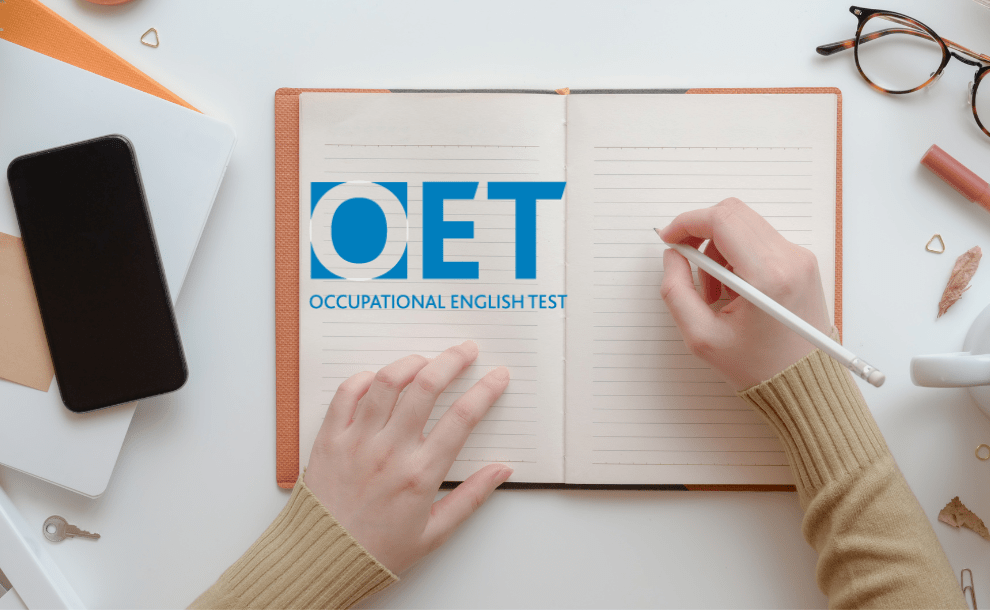Introduction
The OET Writing Test is a crucial component of healthcare professions, assessing candidates’ ability to effectively communicate in a medical context. However, there are several common misconceptions surrounding OET Writing that need clarification.
Understanding the OET Writing Test
The OET Writing section evaluates candidates’ writing skills through a specific format and set of requirements. It is essential to understand the structure and expectations of this test to effectively prepare for it. The grading criteria and assessment process are designed to evaluate candidates’ ability to meet the demands of healthcare communication.
Myth 1: OET Writing is just like any other writing task
Differentiating OET Writing from other forms of writing is crucial. OET Writing requires specific skills and strategies tailored to the healthcare context. It focuses on effective communication, coherence, and capturing the essence of medical interactions.
Myth 2: Grammar and vocabulary are the only important aspects
Beyond grammar and vocabulary, OET Writing emphasizes effective communication. The ability to convey ideas clearly and coherently is crucial in healthcare professions. While language skills play a part, clarity and understanding are paramount.
Myth 3: Using complex language guarantees a higher score
While complexity has its place, clarity holds more importance in healthcare communication. Using overly complex language can hinder understanding, particularly for non-native speakers. Striking a balance between complexity and clarity ensures effective communication.
Myth 4: More content is always better
Quality trumps quantity in OET Writing. Focusing on relevant information and delivering it clearly is key. Including excessive information can lead to confusion and distract from the main message.
Myth 5: Reusing memorized phrases is acceptable
Memorized phrases might seem helpful, but they come with drawbacks. Genuine and authentic language is valued in OET Writing. Developing responses that reflect real-life situations and personal experiences allows for more effective communication.
Myth 6: OET Writing can be done without preparation
Preparation is essential for success in OET Writing. Planning and practicing enable candidates to manage their time effectively and structure their responses appropriately. Without preparation, it is challenging to meet the demands of the test.
Myth 7: A formal writing style is the only acceptable approach
While a formal tone is expected in OET Writing, it is vital to strike a balance between formal language and a patient-centered approach. Being clear, empathetic, and concise is crucial to effective healthcare communication.
Myth 8: Editing and proofreading are not necessary
Proofreading plays a significant role in ensuring clarity and accuracy in OET Writing. It helps identify and correct errors, improving the overall quality of the response. Neglecting to edit and proofread can lead to misunderstandings.
Myth 9: Using complex healthcare terminology is essential
Simplifying technical language is essential to ensure patient understanding. OET Writing focuses on demonstrating competency without overwhelming readers with jargon. Clear and concise explanations are key to effective communication.
Myth 10: Native speakers have an advantage in OET Writing
Non-native speakers face unique challenges in OET Writing, but they can leverage their cultural knowledge and experiences. Understanding these challenges and capitalizing on personal strengths can contribute to successful communication in healthcare contexts.
Tips for Success in OET Writing
To succeed in OET Writing, candidates should thoroughly understand the task requirements. Developing a structured approach to their responses, incorporating relevant examples and case studies, can enhance the overall quality of their writing.
Frequently Asked Questions (FAQs)
To provide a quick reference for readers, here are some common FAQs about OET Writing:
- Can OET Writing be done on a computer or is it handwritten?
- OET Writing is typically handwritten. However, it is essential to follow the guidelines provided by the test administrators.
- Is there a recommended word limit for OET Writing?
- OET Writing tasks have specific word limits that candidates must adhere to. It is crucial to manage word count effectively.
- How much time should be spent planning versus writing in the test?
- Allocating sufficient time for planning ensures a well-structured response. The proportion of time spent on planning versus writing may vary depending on individual preferences.
- Can personal opinions be included in OET Writing responses?
- While personal opinions can be included to some extent, it is important to maintain a professional and objective approach in healthcare communication.
- Are contractions allowed in OET Writing?
- Contractions should generally be avoided in OET Writing to maintain a formal tone.
- How important is punctuation in OET Writing?
- Punctuation is crucial for effective communication and clarity in OET Writing. Proper punctuation enhances the overall quality of the response.
- Can bullet points be used in the OET Writing task?
- Bullet points are not typically used in OET Writing. Candidates should utilize paragraph structures to convey information clearly.
- Is it necessary to address both tasks in the OET Writing section?
- It is crucial to address both tasks in the OET Writing section to meet the requirements of the test.
- Can OET Writing responses be written in the first person?
- OET Writing responses generally avoid the first person perspective unless explicitly required in the task instructions.
- Are spelling mistakes penalized in OET Writing?
- Spelling mistakes may lead to a deduction in the overall score. It is important to proofread and ensure accuracy.
Conclusion
Dispelling the common myths surrounding OET Writing is essential for candidates to approach the test with confidence. Effective healthcare communication requires a unique set of skills that go beyond grammar and vocabulary.
Summary
To succeed in OET Writing, candidates must focus on effective communication, clarity, and coherence. Simplicity, authenticity, and proper preparation are key to dispelling the myths and achieving success in healthcare communication.
Pertinent FAQs
Here are a few important FAQs for quick reference:
- Can OET Writing be done on a computer or is it handwritten?
- OET Writing is typically handwritten, following the guidelines provided.
- Is there a recommended word limit for OET Writing?
- OET Writing tasks have specific word limits that candidates must adhere to.
- How much time should be spent planning versus writing in the test?
- The proportion of time spent on planning versus writing may vary based on individual preferences.
These FAQs offer concise answers and serve as a handy resource for readers.
Now that the myths surrounding OET Writing have been debunked, candidates can approach the test with the knowledge and confidence needed to excel in healthcare communication.


